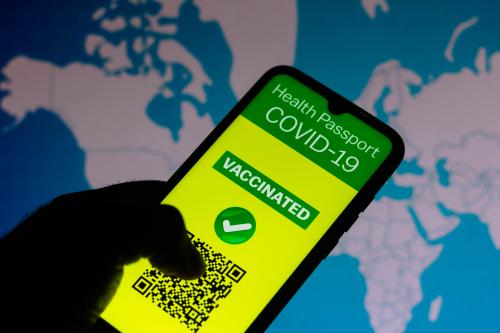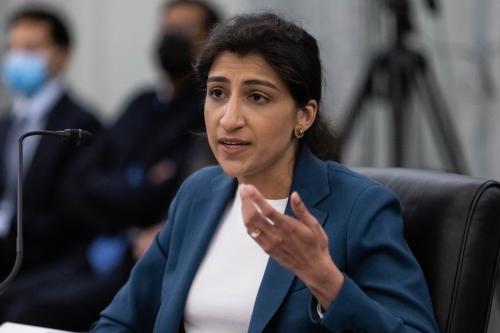In a few short days or weeks, most K-12 students will physically return to the classroom—at least, this is the plan. The Centers for Disease Control and Prevention have recommended that local districts encourage mask wearing regardless of vaccination status. But some cities and school districts are still questioning such mandates, despite the rising number of vaccinated and unvaccinated people being infected by the COVID-19 Delta variant. The current immunization ineligibility among children under 12 years of age further complicates public health mitigation as some of them may become carriers of the virus to their parents and other close relatives, if not careful.
A preview of the upcoming school year can be seen in the high infection rates and abrupt closures of summer camps. Infected campers not only shut down the venues, but also became “super spreaders” as they returned home. A summer camp in North Carolina, which was open to children across the country, resulted in 76 cases in 17 states to date.
Unlike camps, schools will have to return to remote learning or a hybrid approach if the virus prompts another round of closures. In 2020, 50 million K-12 students were sent home at the onset of the pandemic, and as a result the nation’s educational systems are bracing for quantifiable learning losses, mental health challenges, and a range of other systemic and educational disparities particularly affecting the most vulnerable students.
The breadth of the national digital divide was also revealed when more than nine million students were reportedly without home broadband service and an internet-enabled device at the onset of the pandemic. In some low-income households, one device was shared among multiple siblings, resulting in a new categorization of “virtual truancy” when thousands of students stopped showing up for school in some of the nation’s largest school districts.
Congress acted swiftly to adopt measures to close the digital divide among schools and libraries as part of the American Rescue Plan. It passed the Emergency Broadband Benefit (EBB), which allocated a $50 broadband service subsidy and a one-time $100 payment toward a device from an approved $3.2 billion appropriations. Since its rollout in late May, over four million eligible consumers have claimed the benefit, which includes households with school-age children eligible for free or reduced-price lunch. The $7.17 billion Emergency Connectivity Fund was also passed as part of the American Rescue Plan to help schools and libraries acquire WiFi hot spots, modems, routers, and internet-enabled devices for students, staff, and library patrons. Recently, legislation was also introduced by Sens. Markey (D-Mass.) and Van Hollen (D-Md.), and Rep. Meng (D-N.Y.) to extend the Emergency Connectivity Fund with an $40 billion over the next five years. The bipartisan Senate infrastructure bill similarly proposes extending the EBB, although would reduce the subsidy from $50 a month to $30 a month.
States working independently of the federal government are also addressing their respective digital needs ahead of the school year. In Virginia, Governor Northam recently proposed $700 million of pandemic stimulus funding to deploy high-speed broadband to some of the poorest counties in the state. Individual school districts have also been brokering their own deals with private telecom companies and some philanthropic organizations to spur low-cost broadband service options for their neediest students.
These range of interventions are undeniable steps to foster digital equity. But the U.S. Department of Education (DOE) Secretary, Miguel Cardona, has expressed concerns about remote learning, instead advocating for students’ full return to classrooms. A recent DOE report on virtual education during the pandemic found that the majority of fourth-grade students of color were remote-only; 68% of Asians, 58% of Blacks, and 56% of Hispanics chose this option compared to only 27% of Whites. These disparities are partly due to their lack of trust in the handling of the public health crisis, as well as the disproportionate impact of the virus on communities of color, particularly among students whose schools have been the most prone to outbreaks and closures. With people of color also hesitant to get vaccinated, the DOE may have to embrace the possibility of remote learning when the virus likely re-surges, or if some of these families opt to keep their children out of school. This time, digital equity must be the primary focus for policymakers, and Congress must set a national standard that no child is left offline.
The history of equity in schools
Achieving equity has always been a challenge in K-12 public schools. In 2001, Congress passed the No Child Left Behind Act (NCLB) to respond to the failures of the educational system to realize equitable achievement among K-12 students. As an update to the Elementary and Secondary Education Act, NCLB was designed to ensure that all students – especially those from disadvantaged backgrounds – had access to special education services, supportive curricula, and accountable learning environments as measured by test scores, teacher evaluations and professional development opportunities. Students of color, students with special learning needs, and those from impoverished or foreign-born backgrounds were supposed to be the beneficiaries for NCLB, but many of them and their schools were labeled as “low achieving” based on poor test scores alone.
“Congress must set a national standard that no child is left offline.”
In 2015, NCLB was replaced by the Every Student Succeeds Act (ESSA), which is now the main law governing education in the U.S. Compared to NCLB, ESSA promotes equal opportunities for students, and appears to be more progressive than NCLB. But it still masks the long-standing history of discrimination in education since the Brown v. Board of Education case of 1954, which revealed the separate and unequal conditions of schools within segregated Black communities compared to those predominantly attended by White students.
As the conditions of students without home broadband access or a device mirror the broad systemic inequalities of the U.S., Congress must do more than offer piecemeal funding to connect K-12 students to the internet. The current times necessitate the need for a comprehensive policy initiative, or perhaps an addendum to the ESSA, that guarantees institution-wide broadband access for improved educational outcomes and preparedness for the future demands of the 21st century workforce.
No Child Left Offline: A national call to policymakers
A proposed No Child Left Offline (NCLO) initiative would be driven by Congress and rely upon coordinated federal and state resources that help K-12 school districts accomplish the following:
1. Collect local and national school data on broadband connectivity.
Many school administrators began the pandemic not knowing the internet service providers (ISPs) in their local footprint, or the ISPs for their students’ households. As many ISPs have reported their enrollment data for low-cost broadband programs to the Federal Communications Commission, some of the data is redacted and not entirely public. NCLO would require schools to gather household-specific data about broadband access, including service providers, home device availability, and other questions that report the affordability and adoption of high-speed broadband among registered students. Such data can be shared at the city, state, and federal levels to facilitate more accurate broadband mapping around schools to identify internet blind-spots and facilitate the provision of monies to schools and local areas with the highest needs.
2. Provide internet-enabled hardware and options for home broadband service for disadvantaged K-12 public school students to close the digital divide and motivate 21st century educational readiness.
As a national imperative, No Child Left Offline would give eligible, disadvantaged students hardware, instructional software, and services (e.g., digital literacy training) for seamless transitions to remote learning while emboldening students for the new digital economy. These benefits would be available to students throughout the school year, and during the summer months when students need refreshed learning. Whether through the re-direction of E-rate funds to the homes of eligible students or the consolidation of pandemic response funding, eligible K-12 students without a home broadband connection should have access to free, low-cost, or subsidized offerings. Despite the painful transition to remote learning for educators, working parents, and students, these new digital skills like independent learning, collaboration, and multimedia integration, among other competencies, will prove invaluable to the economy. Educational institutions must continue to foster—not thwart—these activities as the nature of work changes from analog to hybrid or fully-digital environments.
3. Support local institutions that can be leveraged to aid students during remote learning, including federally assisted housing, park districts, faith- and community-based organizations.
The physical parking lots of local libraries, fast food restaurants, churches, other community-based organizations became “digital parking lots” for students attempting to get online during the pandemic. But many of these institutions bolstered their WiFi signals without government funding. As the recent infrastructure proposal contains references to “anchor institutions,” the definition should be expanded to those entities that directly support schools. No Child Left Offline can provide funding to convert the parking lots into “digital parks,” allowing states to direct funding to open access programs that design and execute safe, green spaces for broadband access for students and their families without home broadband. NCLO can also encourage other federal agencies to make broadband access publicly available, especially within federally assisted and transitional housing centers where some of the nation’s most vulnerable students live. The U.S. Department of Housing and Urban Development can equip new and existing construction with broadband infrastructure and make free WiFi openly available throughout their properties. In my opinion, the widespread availability of the internet in low-income housing may have facilitated universal access for millions of students during the pandemic.
4. Create an Office of Innovation in every school district to promote digital inclusion and equity.
The digital divide has been widely known for more than two decades, yet it took a pandemic to amplify the costs of online exclusion and prioritize this issue among educators. Understanding technology’s value in education will be ongoing, and without a czar or lead entity focused on innovation, schools will either fall short of expectations, or fail miserably in tending to the emerging needs of the nation’s students. Given these new realities, school districts must have a formal office that works on the effective deployment, adoption, and use of technology within schools, homes, and communities. No Child Left Offline would promote this effective marshaling of resources and programs for schools, students, and families.
It’s too early to say if schools will fully open against the backdrop of a virulent variant. Instead of waiting to find out, educational leaders need to formalize the contingency plan that finally provides universal digital access for K-12 students. Failure to adopt a policy directive which asserts that no child be left offline today and into the future will be catastrophic for many students and particularly those from marginalized communities.







Commentary
No child deserves to be left offline this school year—here’s how Congress can help
August 2, 2021